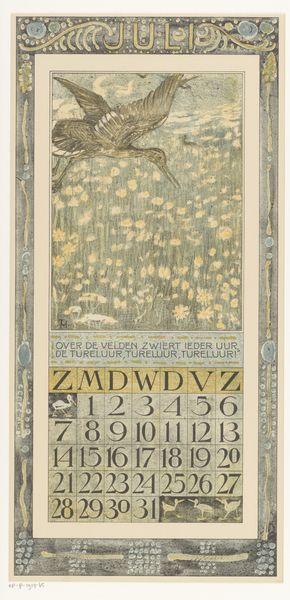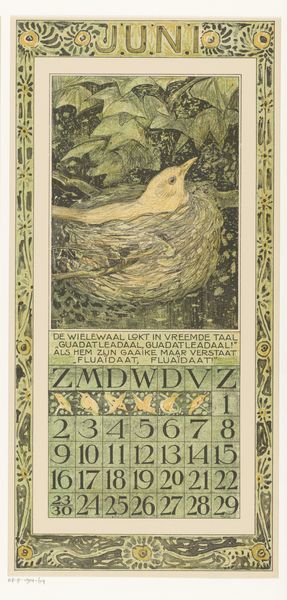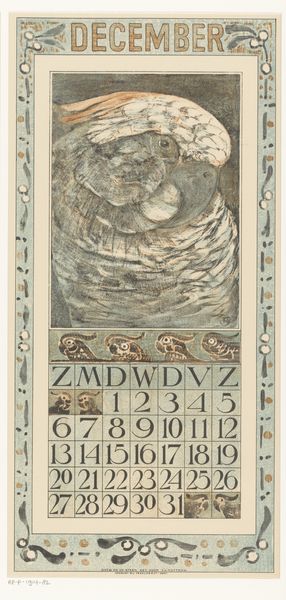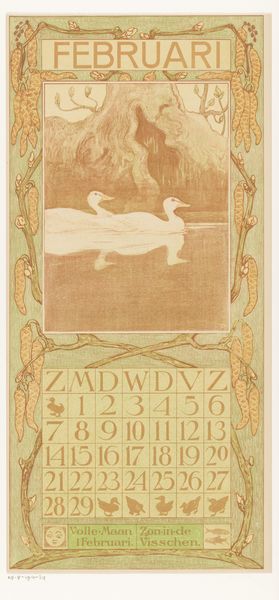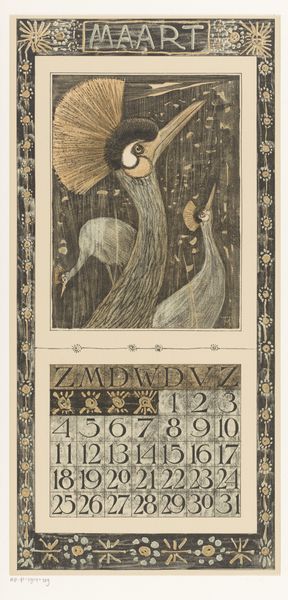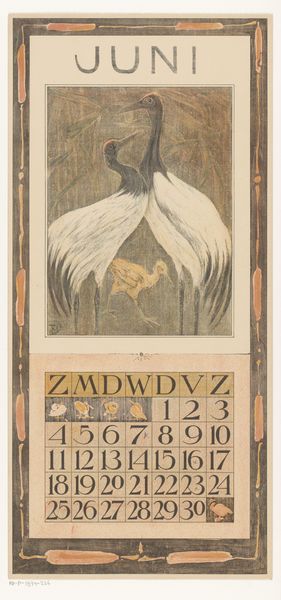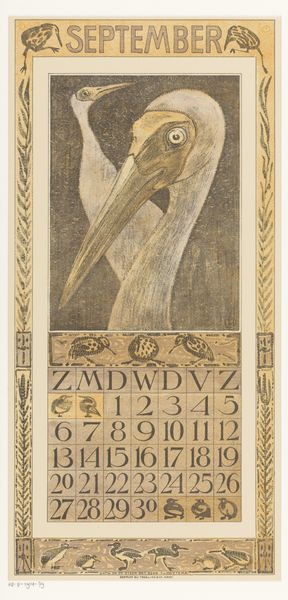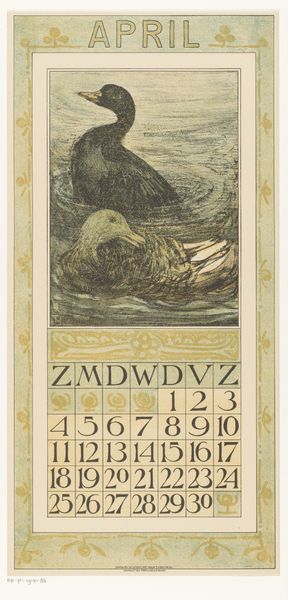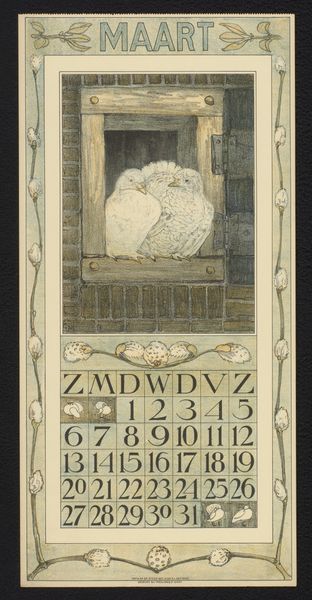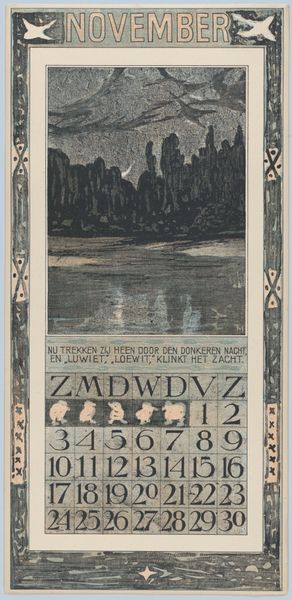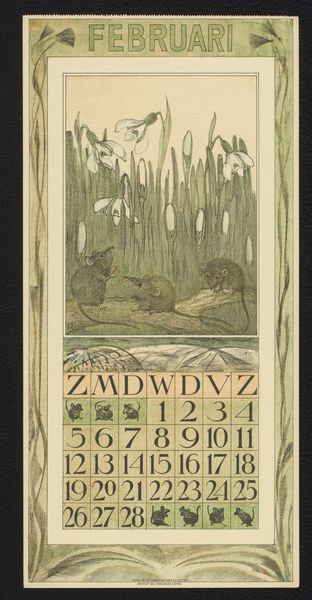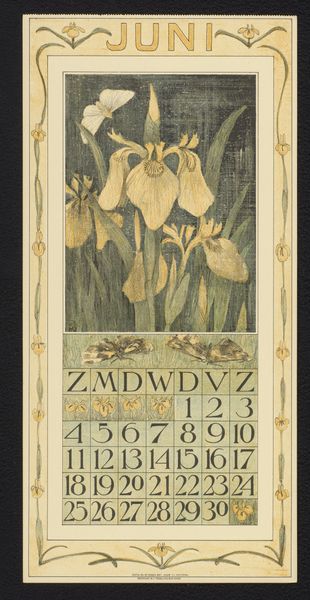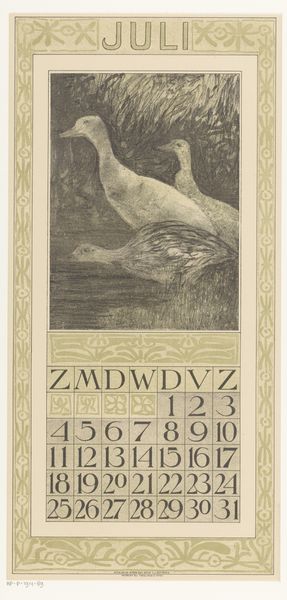
print, watercolor
#
art-nouveau
#
animal
# print
#
watercolor
#
watercolour illustration
#
watercolor
Dimensions: height 440 mm, width 210 mm
Copyright: Rijks Museum: Open Domain
Curator: We're looking at "Kalenderblad maart met eenden"—"March Calendar Sheet with Ducks"—made in 1906 by Theo van Hoytema. It's a print, using watercolor, held here at the Rijksmuseum. Editor: My first impression is the calming, almost meditative, quality. The subdued tones, the careful repetition of the ducks…it has a distinctly domestic feel, though that decorative frame adds an odd element. Curator: The frame, like the depiction of the ducks, draws heavily from the Art Nouveau style. It's fascinating how Hoytema utilizes this almost folk-art style within the structure of a functional object—a calendar. These aren't just birds; they become emblems, linked to the passing of time. It connects with the cultural memory of March and Spring’s reawakening. Editor: I'm curious about the printing process itself. Given the detail, especially in the depiction of the water and feathers, I wonder how many plates were involved. And look at the materiality—the visible texture of the paper is vital in setting the tone. You mentioned domesticity; it feels tied to craft, labor, and the burgeoning market for printed goods. Curator: Exactly! And consider the integration of text and image. The calendar grid with those tiny duck illustrations for each day…It brings this symbolic weight to the mundane task of tracking time. It is fascinating that we are supposed to track each day in March thinking about the life and rhythm of a duck. Editor: I am particularly drawn to the quote right above the dates: 'De eend roept met zijn platte bek…'. The material quality of the paper combined with those decorative frames feels intentional to enhance not just the image but also the textual content. Curator: Ultimately, it prompts a deeper consideration of nature, time, and cultural symbolism—a meditation on the recurring cycles around us. Editor: Absolutely. Examining the materials and techniques gives insights into broader historical patterns of production and consumption of domestic goods at that time, especially around folk arts and calendar print.
Comments
No comments
Be the first to comment and join the conversation on the ultimate creative platform.
